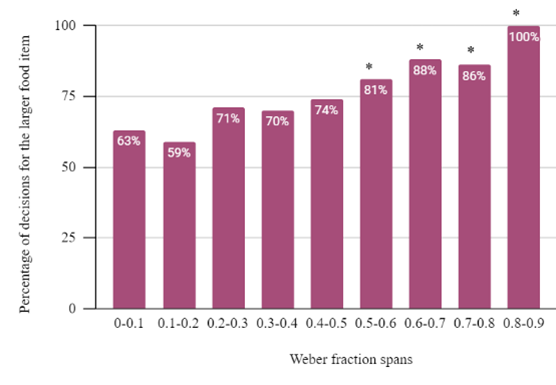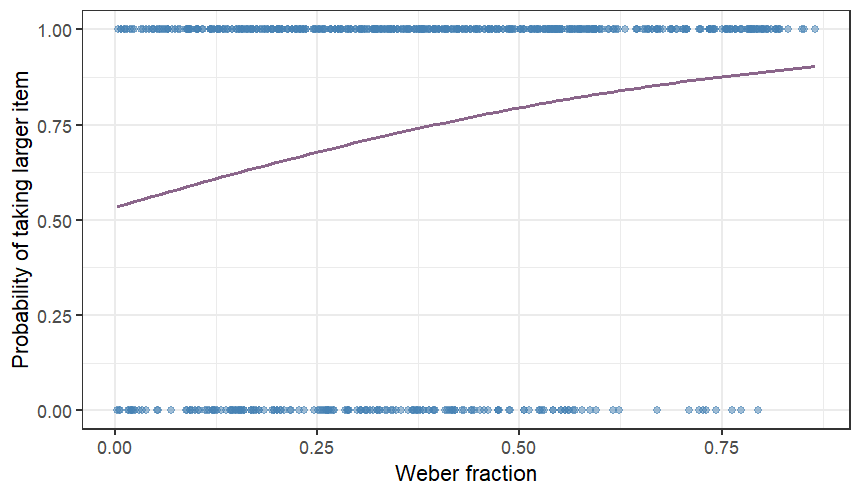The results concluded that as a group, the gibbons displayed a significant preference for the larger one of two simultaneously presented food items…

..when the size difference, expressed as a Weber fraction, was at least 0.5 or larger. This indicates that the volume of the two food pieces differed by 50%.
Looking at the individual results between the gibbons, Ebbot displayed a significant preference when the size difference was 0.1 or larger and for Edith it was 0.2 or larger.
In order to understand the ability of the gibbons to visually discriminate between the food pieces, a logistic regression was performed.

The result for the group indicated that the gibbons were better than chance (on average) at choosing the larger of the two food items at very small Weber fractions and that they become really proficient for Weber fractions of around 0.8.
When looking at the individual results, Lelle’s ability to choose the larger one of the two simultaneously presented pieces was estimated to be lower than the groups’.
The results from Ebbot and Edith indicated that both younger gibbons display an estimated greater visual discrimination ability than Lelle.